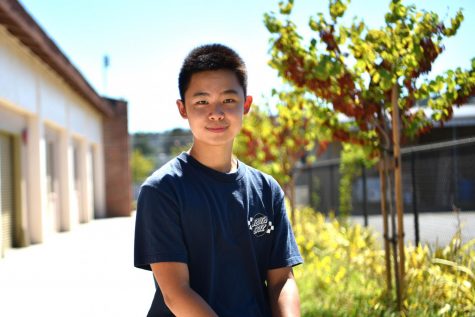Staying awake
Exploring the adverse effects of energy drinks on the MVHS community
November 12, 2022
In April of 2021, a university student was rushed to the intensive care unit in critical condition. Scans at the hospital found that he was suffering from heart and kidney failure as well as having trouble breathing. The root cause? He had been drinking four 500 ml energy drinks, roughly two liters, every single day for the last two years.
These caffeinated substances are a staple in countless high schools and colleges across the country. With a wide range of options including Monster Energy, Celsius and Bang Energy, students have a plethora of options to choose from for fueling their late night study habits.
A study by the American Academy of Pediatrics reports that between 30% and 50% of adolescents consume energy drinks. These highly addictive substances are most commonly cited as a way to keep students awake while doing homework or studying for tests late at night. Unfortunately, this extra hour of heightened awareness comes at a serious price to the student’s health. The Center for Disease and Control found that symptoms of energy drinks include “dehydration, heart conditions, anxiety and insomnia.” In more severe cases, energy drinks can even lead to hospitalization after frequent usage.
However, these energy drink companies are a driving part of the problem because groups like Monster Energy specifically target a younger demographic. Across the industry, energy drink companies spent nearly 1.04 billion dollars to advertise these sugary drinks — and these advertising dollars are directly targeted towards students. A report by the Journal of Nutrition Education and Behavior found that these digital marketing efforts are “more persuasive with young adults than other marketing methods.” Among these advertising messages include claims that they will keep students awake at night to study or finish their assignments. REIZE magazine charted that Monster Energy can keep students awake for three to four hours and Red Bull is said to offer temporary boost with an eventual crash.
This problem is particularly pervasive in the MVHS community. In a high pressure environment where AP courses, tests and daily homework create countless hours of homework every night, students are much more likely to use energy drinks as a temporary bandage to the root problem of too much homework and the resulting lack of sleep. A schoolwide survey of 163 MVHS students found that 35% of students use caffeinated substances in order to stay awake at school. In a climate filled with high expectations and a chief desire to succeed, caffeinated substances continue to thrive.
Currently, there is no easy solution to this issue. The energy drink industry continuously influences policy decisions and actively makes efforts to block government regulation. But students and adults can and should do more to raise awareness about the damaging effects of energy drinks. Especially within schools in competitive regions like the Bay Area, disclaimers about energy drinks should be incorporated into the nutrition department. During Advisory periods, teachers could share information with their classes about the importance of consistent sleeping schedules and the dangers of drinks like Monster energy.
To address the root cause of this issue requires a joint effort among students, staff and parents alike. Notably, MVHS staff should make an effort to assign less homework or more evenly distribute homework throughout the week. Avoiding things like multiple tests on the same day ensures students don’t have to pull all-nighters to study. Among students, self-restraint to focus on finishing tasks and avoiding procrastination are the best solutions to getting at least eight hours of sleep every night. Finally, parents can keep students accountable and on track, including discussing limits on things like screen time and social media usage.
Taking these key steps to provide more warnings ensures that students don’t turn to energy drinks as solutions to stay awake.


















